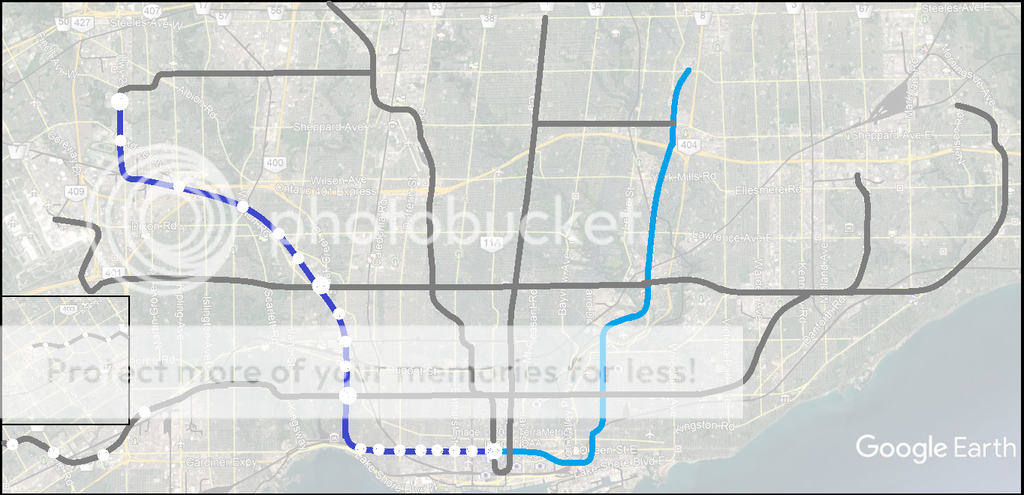Towered
Superstar
It makes me cringe to see people suggest the Queensway/Lakeshore as a potential routing. Line 2 is no where near capacity west of the Humber during rush. The 80 Queensway runs every ~20 mins during rush. Yes, Park Lawn needs additional transit connections.. The planned GO station will give them downtown bound trains every 15 mins. A waterfront LRT to the nearest DRL station will provide an additional connection that should provide significant improvement to the current situation.
Meanwhile south of Bloor in the west end of the Old City, you have:
-63 Ossington operating every 3 mins peak, 22,000 riders over ~7km = 3,142 riders per KM
-47 Lansdowne operating every 4 mins peak, 15,000 over ~10km = 1,500 riders per KM
-29 Dufferin, 44,000 over ~12km = 3,666 riders per km
A corridor 1.5km wide with 2014 ridership at 81,000 riders, with not one stop downtown.
It is important to remember that the Roncesvalles corridor is not a central corridor, it does not see the level of riders as the Lansdowne-Ossington corridor. Nor does it offer the opportunity to relieve all 4 streetcar routes midway into downtown. If you combine the number of riders currently using the Dufferin corridor, with the potential riders who will transfer from all 4 Streetcar routes (5 if the Line is extended to St. Clair), this line would be well used today, IMHO.
It's also important to remember, University south of Bloor is ~at capacity during peak. Line 5 and Line 7 will feed into University when they open in 2 and 4 years respectively. This is a problem that we should foresee.
A Dufferin-Jane alignment could offer a long term solution to many of the problems we've collectively identified. This map includes GO lines, proposed GO stations as well as Line 5 and 7 in their entirety for context. The dark blue line is the DRL West. This is a longer version of the previous map I posted on Page 1.
View attachment 173714
Some very solid ideas here. A few suggestions:
- There aren't enough stops. DRL west should have stop spacing similar to line 2. I would add stops at Bathurst and Queen, at Dundas and College with an underground connection to Dufferin Mall, and maybe one at Dufferin and Davenport (close to George Brown?).
- The line misses Parkdale and the important connection to multiple lines at Roncesvalles. How would you address this gap?
- Perhaps Dufferin should get its own subway line while the DRL serves Parkdale, Roncy, the massive coming density hub at Dundas West, the Junction, the Stockyards, then veering north-west to Mount Dennis, Weston, and up Jane into North York as you proposed.
- Taking DRL along the Queensway is insane overbuilding. A surface LRT ROW west from Humber Loop to Sherway is the solution there.





